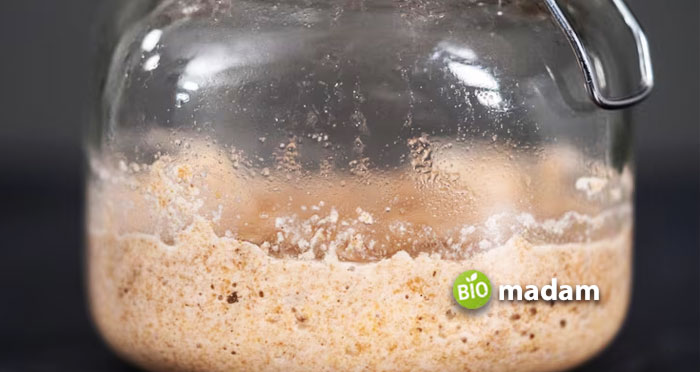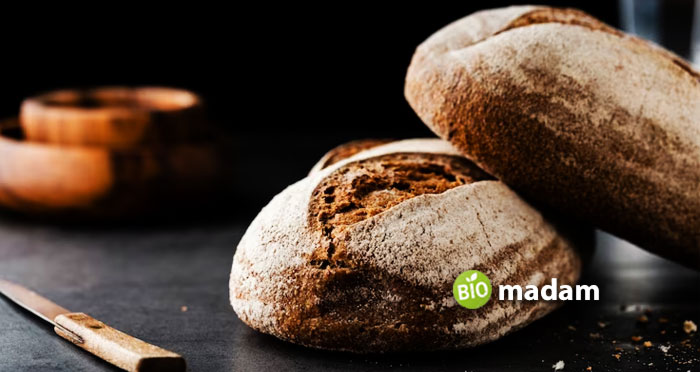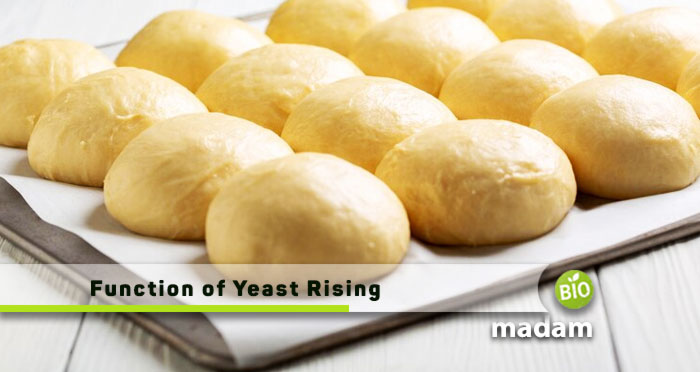Yeast is one of the most critical components of baked goods, regardless if you are making pizza or croissants. It allows the dough for bread, pizza, buns, etc., rises to give it a light feel. Yeast has been used in baking since 1330 BCE. Ancient Egyptians introduced the use of yeast to raise bread, followed by its utilization in Chinese cooking. Opposed to a common misconception, yeast is not bacteria, instead fungi. Keep reading to learn the function of yeast in baking and how it helps bread rise.
What is Yeast?
Yeast falls in one of the types of eukaryotic cells, belonging to the kingdom Fungi, and that is why yeast and fungi are often confused with being the same. Yeast is one of the numerous hundreds of types of fungi in our ecosystems and community.
It is a single-celled organism that converts sugar and starch into carbon dioxide and alcohol through alcoholic fermentation. The scientific name for yeast is Saccharomyces cerevisiae. It requires moisture, warmth, and food to survive. There are over 500 varieties of yeasts found in nature.
The yeast used in cooking is of two types: brewer’s and baker’s.
Brewer’s yeast is used in brewing beer, while baker’s yeast is what bakers use to prepare bread and other bakery items. Let’s tell you about baker’s yeast in detail.
Types of Baker’s Yeast
Baker’s yeast is categorized into wet yeast and dry yeast. As the name indicates, wet yeast comes in wet form, in the shape of small square cakes to be used in bread dough. It is also known as cake yeast. The wet yeast cakes contain 70% moisture, making them quite perishable. In comparison, dry yeast comes in powdered dry form. The dry yeast is further of two forms, such as:
Active Dry Yeast
Active dry yeast comprises yeast cells without any addition of moisture to them. It comes as comparatively larger granules than instant yeast. Active dry yeast is dormant, and you need to dissolve it in a small amount of water to activate it. Sometimes people also use sugar to activate yeast faster.

Instant Yeast
On the other hand, instant yeast can be used instantly without waiting for proofing. It also comes in granules but is finer than active dry yeast. You can find it in your grocery store in the form of sachets. Add your yeast packet to your dough directly without dissolving in water. Using it all in one go or packing it tightly is best.
Function of Yeast in Baking
Yeast has been used as a raising agent by cooks and bakers for centuries. It allows the bread to rise and obtain a lighter feel. The functions of yeast in baking include:
Rising
The most important role of yeast in baking is its contribution as a raising or leavening agent. Leavening agents cause the dough to rise or expand by releasing gas. When you add yeast to bread, it ferments the sugars in the flour and releases carbon dioxide. The carbon dioxide cannot leave the stretchy dough and causes it to rise or inflate. Thus, it gives an airy and light structure to the dough.
At the same time, ethanol also contributes to raising the bread, but in the oven. Alcohol is liquid at room temperature and tries to evaporate when put in a preheated oven. Due to the inability to escape the surface, these vapors raise the bread during baking.
Different types of yeasts are used as raising agents in various industries depending on the need. More resilient and tolerant yeasts are chosen for high-stress processes. Instant yeast does not require long proofing times, so it has made a huge difference in large-scale manufacturing.
Flavor
How often does it happen that you can guess someone is baking bread, even when you are not in the kitchen?
This happens because of the characteristic yeast aroma. It gives a particular fragrance and taste to the bread resulting from thermochemical reactions during baking. Carbon dioxide production through fermentation also gives rise to other products that act as flavoring agents. These include aldehydes, higher alcohols, ethanol, and organic acids. Some of these products contribute to the flavor, while others provide a brown color to the top.
Nutrients
While the main focus when using yeast is to raise the rough and make it airy, it also contains micronutrients to improve health. Baker’s yeast has shown a significant contribution to the nutritional value of the bread. It has vitamins and minerals, including vitamins B1, 3, B5, B9, zinc, and potassium. However, vitamin D is specifically present in high amounts.

The Bottom Line
Yeast is an important component of the baking and brewing industries. It produces carbon dioxide and ethanol by fermenting the sugars in the flour. The carbon dioxide contributes to the rising of the bread when resting, while the ethanol plays its role in the oven. Besides acting as a leavening agent, other functions of yeast include imparting flavor and providing macro and micronutrients like protein, zinc, and potassium.
FAQs
Why is it called yeast?
The word yeast comes from the Old English word “gyst,” further modified by adding “yes-” from the Indo-European origin, meaning foam, boil, or bubble. It refers to the texture of the yeast when proofed.
What is proofing yeast?
Proofing yeast refers to adding yeast in water with a little sugar to activate the yeast. It allows bakers to check if the yeast is still alive. Dead yeast does not act as a leavening agent and may ruin your batch. Dissolve the contents of the dry yeast sachet to warm water or milk with sugar. You should see bubbles in the mixtures in five to ten minutes. It shows that the yeast is good to use.
Do I refrigerate or freeze dry yeast after opening?
It is suggested to pick smaller sachets of yeasts so you can use them all at once after opening. However, if you have a bigger box, you can refrigerate it and use it within the next four months. Alternatively, toss it in an airtight box and freeze it in the back of the freezer for as long as six months. Make sure to bring it to room temperature before using it.
What if my dough isn’t rising?
There could be various reasons your dough is not rising, including the temperature. If you put the dough in a cold place, it will take longer to rise and not give perfect results. So, place it in a warmer environment. Hot water or milk can kill the yeast; use lukewarm liquids only. Kneading too much or too little also impacts how your dough behaves.
Does yeast expire?
Yes, yeast is a living organism that dies at some point, or as you may say, expires. Experts suggest using yeast within six months after opening it. You can check the activity of yeast by adding it to a mix of lukewarm milk and sugar. If it foams, it’s good to use!

Meet me; I am Paulina Zaniewska, who’s more hooked on providing the best health blog. I’ve always been so determined to compete as a nutritionist, and here I am, done with a Master’s in food technology. My brilliant performance throughout encouraged me to help people.

